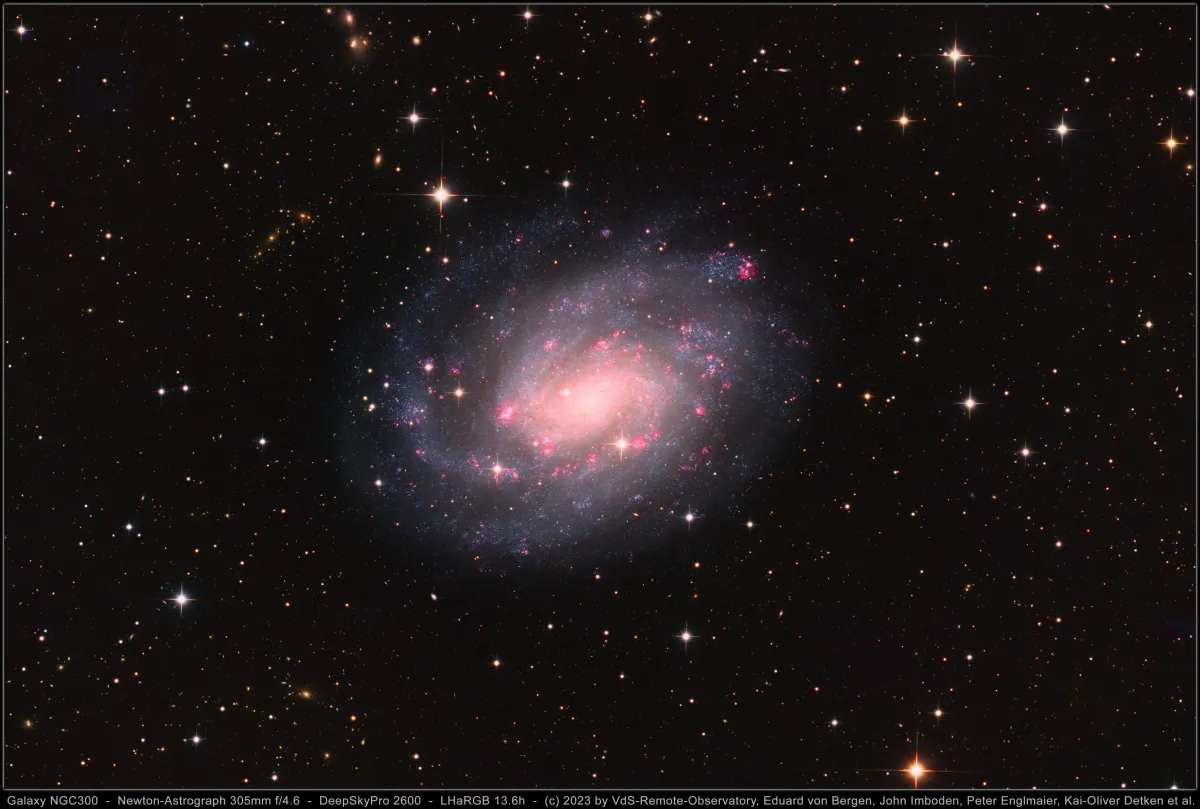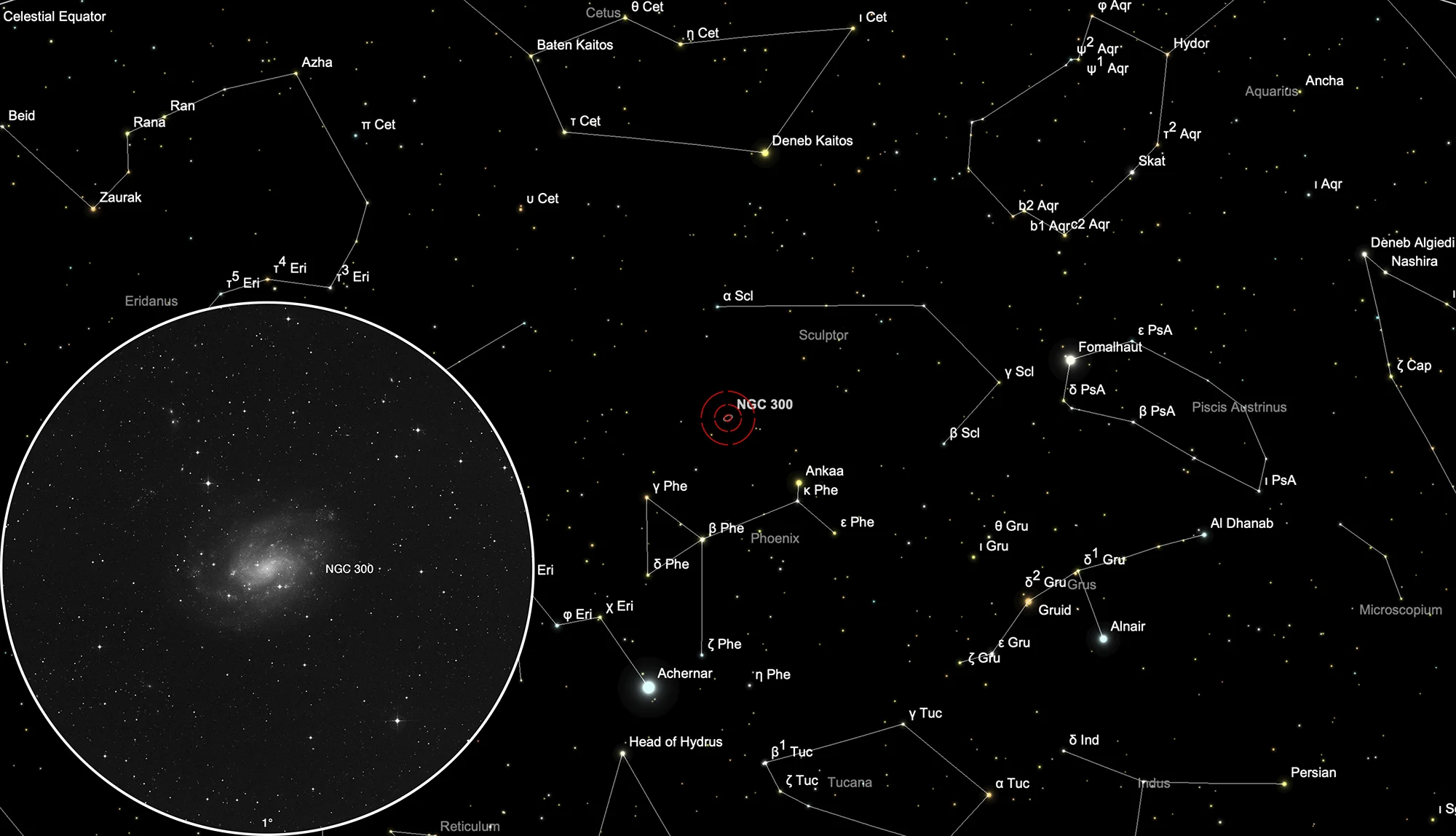Galaxy NGC 300


History
This galaxy was discovered by Scottish astronomer James Dunlop on 5 August 1826 using his 9 inch selfmade speculum reflector at Paramatta in New South Wales. He observed it three times, listed it as number 530 and noted: «A pretty large faint nebula, irregular round figure, 6' or 7' diameter, easily resolvable into exceedingly minute stars, with four or five stars of more considerable magnitude; slight compression of stars to the centre.» [50]
John Herschel observed this galaxy from South Africa and listed it as h 2359. His first observation was during sweep 486 (1 September 1834). He noted: «bright; very large; very gradually much brighter towards the middle; very much extended; of irregular figure; 8' to 10' long; 3' or 4' broad; has subordinate nuclei.» Few days later during sweep 488 (4 September 1834) he observed it again and noted: «faint; very large; very gradually brighter towards the middle; 4' long, 2' broad; has another neb attached.» Three years later he observed it again during sweep 803 (30 december 1837) and noted: «A large oval nebula containing 3 stars. [N.B. Mr Dunlop's nebl 530 is described by him as easily resolvable into very minute stars. Its identity with this is therefore very doubtful.]» [11] In Herschels «General Catalogue» the nebula is listed as GC 169. [467] Dreyer then added it as NGC 300 to his «New General Catalogue» published in 1888. [313]
Physical Properties
| Designation | NGC 300 |
| Type | Gx (Scd) |
| Right Ascension (J2000.0) | 00h 54m 53.3s |
| Declination (J2000.0) | -37° 41' 03" |
| Diameter | 19 × 12.9 arcmin |
| Photographic (blue) magnitude | 8.7 mag |
| Visual magnitude | 8.1 mag |
| Surface brightness | 14.3 mag·arcmin-2 |
| Position Angle | 111° |
| Redshift (z) | 0.000480 |
| Distance derived from z | 2.03 Mpc |
| Metric Distance | 1.970 Mpc |
| Dreyer Description | pB, vL, vmiE, vgpmbM |
| Identification, Remarks | h 2359; GC 169; ESO 295-20; MCG -6-3-5; AM 0052-375; IRAS 00528-3758 |
Finder Chart
Be careful when trying to observe the galaxy NGC 300 from Switzerland. The mirror may fall out from your Dobsonian. With a declination of -37.7° in the constellation Sculptor it just reaches about 5° above southern horizon during June to March. Because the earth is round, for each 111 km more south the galaxy rises 1° higher above the southern horizon. On 9 October it in opposition with the Sun and is therefore highest in the sky at local midnight.
